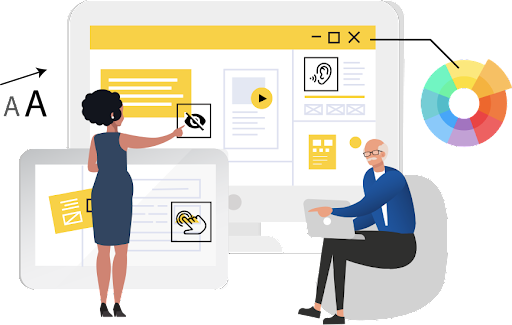The top 5 benefits of adopting service design

With service design, you look at your service comprehensively from the customer’s perspective. It applies to everyone and everything in your organization.
Or, well, it should. Once you get it right, you are proactively in charge of your customer experience. The benefits are significant. Let us explore five of the main ones.
1. It is cheaper to notice an error at the start
With service design, you ensure that your product and service is developed for users and the group of purchasing customers. You make sure you deliver value to the customer and the customer’s customer.
Because service design looks at service development from the customer’s perspective. And it does so in the early stages of product development. This ensures that the product and service is developed for users and the group of purchasing customers.
Service design takes both the user experience and customer experience into account.
User experience emphasizes functionality and ease. Customer experience leaves a memory. UX is therefore not CX.
The long cycle of service design covers everything from your customer orientation strategy, and how you internally bring that strategy to life, to how you ensure a great customer experience across multiple channels.
We think this work is so important that you should handle it yourself, rather than assign it to any external party.
2. Service design breaks down silos
Service design is often described as a stage, with the customer playing the role of the audience. In other words, the customer does not know, nor do they need to know, what is happening backstage. They are not interested in what is happening within the company. They only care about what comes out or is visible to them.
At its most extensive, service design starts all the way back from streamlining the activities of the teams and their employee experience.
Large companies in particular are challenged by departments and employees forming silos around their own functions. When this happens, development takes place within the same circles, without any fresh thoughts coming in. The risk is that people will only see things from one - their own - point of view.
There is also the additional risk that, when tasks are moved from one department to another, they get lost in no-man's-land.
Service design answers these challenges: it ensures that the silo boundaries are broken down, ideas are exchanged, and work goes smoothly without the customer even noticing the exchanges between departments.
3. You lead how customers experience the company
You always want the customer’s journey to be smooth and pleasant. But in this case, the customer’s experience is also positive, and they are happy to deal with the company - hopefully even share their experience with their friends.
In a world full of services and products, companies need to stand out through the customer’s experience of the product, service, company, person, or brand. People are increasingly buying experiences, not concrete things. Their decisions are based more on feelings, than on how the product or service functions.
Managing the customer experience consistently across multiple channels has its own challenges.
The customers are in the power position. They have the power to accept or decline your product. You need to proactively lead them. Whichever channel or medium they use, it is important to:
- ensure a uniform service quality
- view things genuinely from the customer’s point-of-view
- understand the customer’s needs and identify their journeys as early as possible
Going through all this once is not enough. You need to be in front of it constantly: develop, edit and react. There are so many variables that if you want permanent and significant results, service design needs to be integrated deeply in your organization’s core. True development is best achieved when the personnel have the tools and skills to primarily manage the wide field of service design by themselves.
4. While delivering value to the customer, you also enhance your own business
The market is changing rapidly, and your customers are responsive to it. As product and service life cycles get shorter: you have to be more responsive to changes. For this reason, development must be continuous. The challenge is that customers may not even know what they want.
With service design, your customer is the focal point, but equally important: you don’t lose focus of your own company, and its goals and resources.
5. You are customer-oriented and provide a positive customer experience
A truly successful customer experience can only be created in a genuinely customer-centric company where the basic concepts and philosophy of service design are part of everyday operations.
That is why you have to involve the customer in the product development process, and examine your operations by means of service design.
Despite this, many companies claim that they are customer-centric while still producing products and services in a company-oriented manner. They become so caught up in their way of operating that they cannot see themselves through an outsider’s eyes.
You are only customer-centric if the customer is taken into account in all layers of the company, and all phases of development. It is too late to start including service design upon meeting the customer. The customer has to be involved in all operations - also during product development.
So let us simplify and conclude the five benefits.
The benefits of service design in short
- Products and services are designed for users and (at least) the purchasing customers
- Closer cooperation between departments
- Producing a positive customer experience
- Implementing things sensibly while delivering value to the customer
- Strengthening customer-centricity
Published:
Updated:

